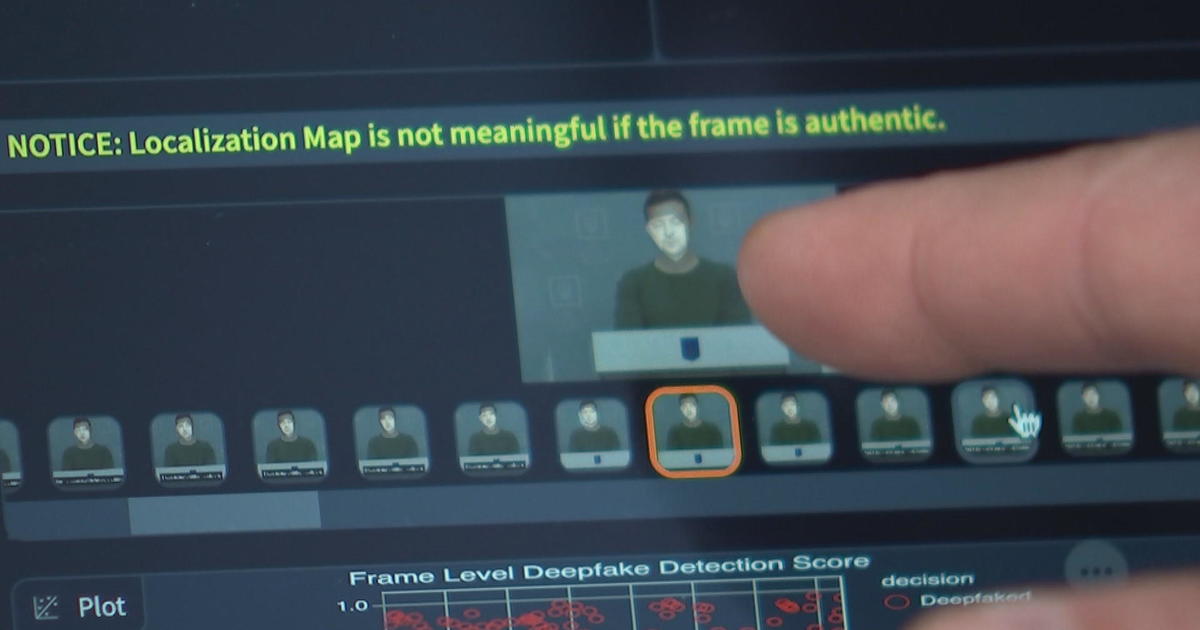How Drexel University Is Waging the War on AI-Generated Images That Could Plague 2024 Campaigns
PHILADELPHIA (CBS) – On Thursday we highlighted the threat of artificial intelligence to “supercharge” misinformation and misinformation in the 2024 elections. Professor Matthew Stamm from Drexel University is leading a campaign against the use of artificial intelligence (AI) to manipulate misinformation and misinformation in the 2024 elections. Some campaigns, including those of Florida governor and former Republican presidential candidate Ron DeSantis, have already been accused of using the technology. Stamm has developed software that can detect these fake and manipulated pieces of media. However, Stamm's software is currently not available for public use and leaves voters to themselves to determine what is real and not. This will require time, education, and a rethink of how we interact with video and images online.

Published : one year ago by The Bharat Express News in Tech
PHILADELPHIA (CBS) – On Thursday we highlighted the threat of artificial intelligence to “supercharge” misinformation and misinformation in the 2024 elections.
Some campaigns, including those of Florida governor and former Republican presidential candidate Ron DeSantis, have already been accused of using the technology.
“This is truly one of the great information security problems of the 21st century,” said Matthew Stamm, a professor at Drexel University.
That is how Stamm sees fake media spreading online. Deepfake videos and manipulated images were used to spread disinformation during the 2020 election, but rapid advances in artificial intelligence technology now make videos and images look more realistic and are easier to create.”
“You can also say ‘make me an image or a video of X politician engaging in certain behavior,’ and it can create a visually realistic image,” Stamm said. “Certainly visually realistic at a glance, which is often the way you interact with images on social media.”
Stamm and his team at Drexel have now created software that can detect these fake and manipulated pieces of media. He walked CBS News Philadelphia through the program.
His software discovered a deepfaked video of Ukrainian President Volodmyr Zelensky in which he allegedly called on fighters to lay down their arms in the country’s war with Russia.
“It becomes clear that his face is not real. The marks in this do not match the marks in the rest of the video,” Stamm said.
One of the people in this photo wasn’t really there. Can you guess who?
Stamm also showed us a seemingly normal image of a family. But when the software was reviewed, it was discovered that one woman had been artificially added.
Can you tell who it is? Click and drag the bar to see how the Drexel software marked this image.
Stamm said the software detected that the woman on the far right, dressed in white, had been edited into the photo.
AI has already made it to the 2024 campaigns
And Stamm says AI has already made its way into the race for the White House in 2024. Last summer, he said his software could identify several alleged cases AI-generated images in a campaign ad for Ron DeSantiscreated to show that former President Donald Trump Dr. Anthony Fauci hugs.
“To my knowledge, this is the first time a major American political candidate has used AI-generated media without making it clear that they were using it in the campaign,” Stamm said.
With AI becoming increasingly popular, users should take images and videos with a grain of salt
But there is a problem. Stamm’s software is currently not available for public use. It is only accessible to the US government. That leaves voters to their own devices to figure out what’s real and what’s not.
According to Stamm, this will take time, education and a rethink of the way we interact with video and images online.
“A photo used to be a bit of the truth. Now a photo is more of a suggestion,” Stamm said. “You have to look at it in the context of larger evidence and give a little bit of background to say, ‘is this really real?’”
If you see something bizarre online, experts say it’s best to question it.
For example, if you get a call from someone claiming to be a poll worker and what they tell you is incorrect, you can always hang up and call the polling place back.
Also be sure to check trusted sources for the best information.
Topics: Academia, AI, Drexel University
